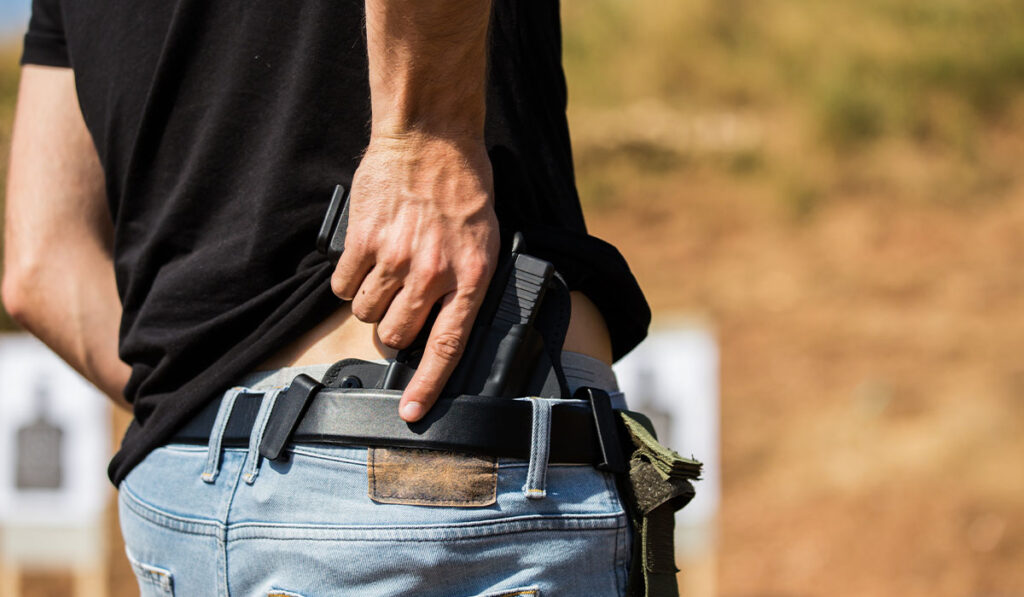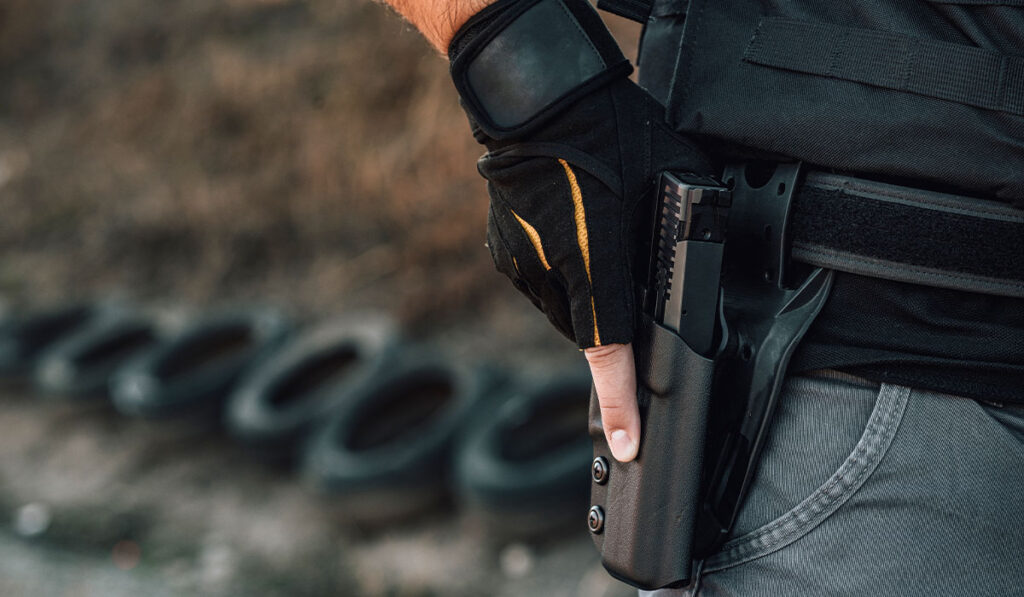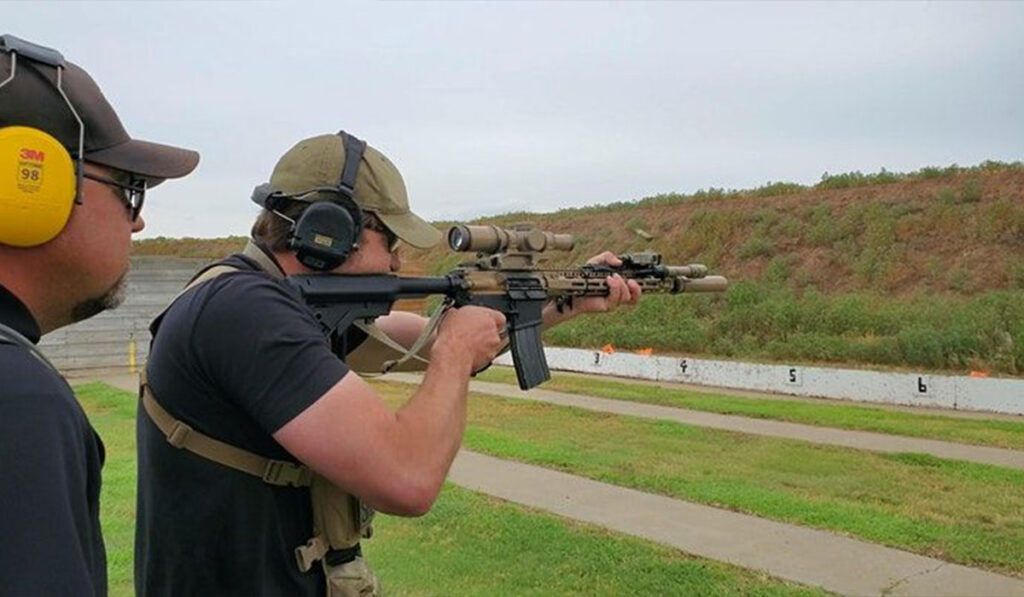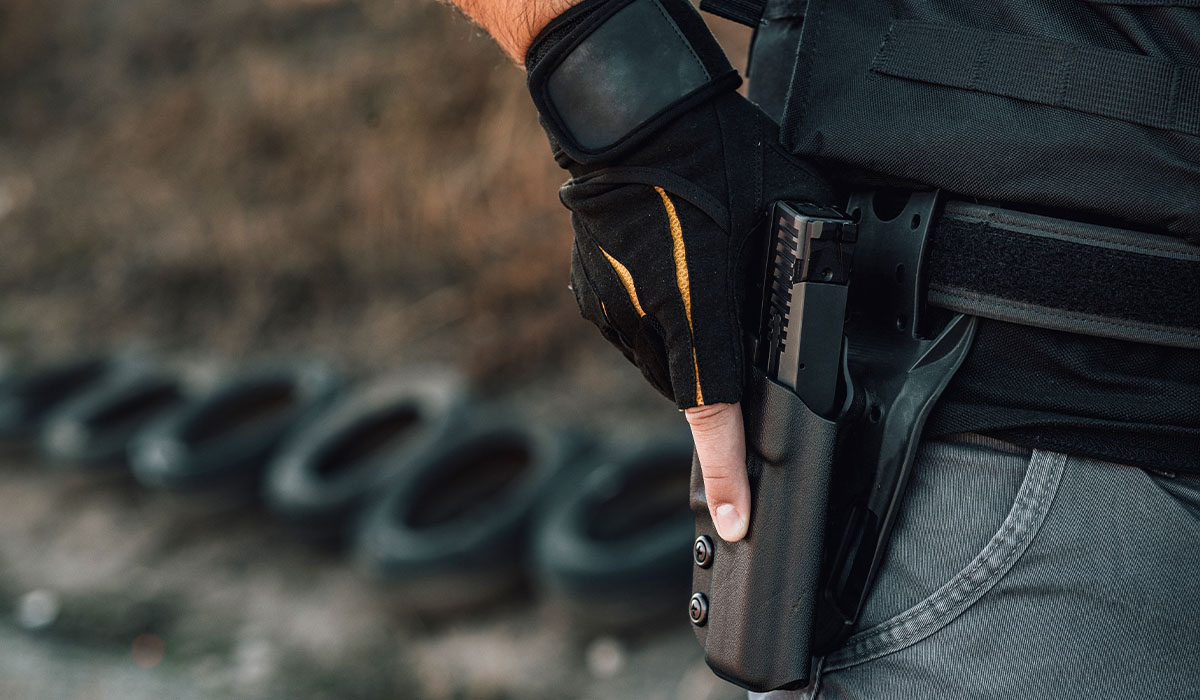From the settling of the American Colonies, into the Revolutionary War, through the Westward expansion, and all the way to modern times, firearms have been an integral part of American history.
The main reason for carrying a firearm is to protect yourself or others. As a defensive weapon, what gives you the best advantage, open carrying or concealed carrying? There are distinct advantages and disadvantages, however, the laws of your state may play a larger role in how you carry your personal protection firearms.
Today, many states have enacted laws that allow for the open carrying of pistols in public places. Some of these states do not require permits to carry, while others require permits such as a concealed carry permit for carrying openly.
Understanding Positive and Negative Opinions

In my home state of South Carolina, we have become the newest state to allow for open carry, if that individual has a concealed weapon permit issued by the state. Many believe that allowing for “open carry” will help with a rising violent crime rate that is currently spiking all across the country.
They cite current legislation in larger cities that have very strict gun ownership or purchase laws that also have extremely high violent crime rates. While I personally do not completely agree with that correlation, you cannot deny that there have been millions of defensive uses of firearms all across the country.
Also, there have been many studies from all across the country that show when law-abiding citizens are allowed to carry a firearm, whether openly or concealed, violent crime has decreased in some of those areas.
So now the only question is, should you carry a firearm concealed or openly? Hopefully, during this article, I can shed some light on what might be best for you and your family based on your individual situation.
Over the last several years, the news has been inundated with articles about “gun violence” and how firearms need to be outlawed. This type of talk is absolutely absurd. A firearm is only a tool used by individuals for a specific purpose, much like a hammer is for a carpenter or a wrench for a mechanic.
It is the person that wields that tool with evil intent that is the problem. While politicians fight back and forth about whether or not certain firearms, types of firearms or their accessories should be banned or their accessibility reduced, this is not the first time in our history that this has been a conversation amongst lawmakers.
Mr. Mark Anthony Frassetto, a lawyer, conducted research to compile a list of laws regarding firearms that goes all the way back to the year 1607.
In his article, “Gun Law History in the United States and Second Amendment Rights,” Robert Spitzer says that Mr. Frassetto found close to 800 laws that were written between 1607 and 1934 throughout our country.
History of Gun Laws

These gun laws during the Colonial and Pre-modern-Constitution period (1607-1790) included carry restrictions for firearms not related to hunting or the militia. In 1686 New Jersey was the first to enact laws against wearing weapons because they induced “great fear and quarrels.”
Many other states followed suit all the way into the early 1800s, restricting the carrying of firearms into crowded areas. During the Post-Civil War era, 1868-1899, several states had laws passed within their borders by cities and towns that banned the carry of pistols altogether.
These states included: Arkansas, Kansas, Texas, and three places in Tennessee. Wyoming had a law that banned both rifles and pistols from being carried in cities, towns or villages. Many of these places that passed similar laws did so because they thought outlawing firearms was safer for their citizens than allowing them to possess them in public.
Even the “wild west” has been overly romanticized regarding how people carried firearms during those times. The gun carry and ownership laws during that time were just as restrictive, and many towns and villages created police departments that were funded by taxes collected from local bars, gambling establishments, and prostitution, in order to deal with violent individuals or criminals. These gun laws spanned from East to West coast and changed throughout the years until 1934 when the National Firearms Act was enacted.
Currently, South Carolina is just the newest state to pass “open carry” gun legislation and to be permitted to carry, you must have a state-issued concealed weapons permit.
There are numerous other states that have a variation of an open carry law, and I would urge anyone reading this to become familiar with those laws in your state. Finding the information could be as easy as asking a concealed carry instructor, your local law enforcement, or your state law enforcement division.
While your state may allow open carry, some cities or towns have written ordinances that restrict the locations you are allowed to carry in, and with the number of protests and civil disturbances that occur throughout the country, my city, in particular, has banned firearms all together when you are participating in a permitted protest or gathering.
That being said, ignorance of the law is never an excuse. It is your duty as a responsible gun owner to learn the laws that would affect where and how you can carry.
Importance of Training
Throughout my career as a law enforcement officer, I have seen many things that have made me scratch my head and wonder just what some people were thinking. When it comes to responsible gun ownership, there are just a few tips or suggestions I have for everyone, that will save you from having problems in the future.
First, never leave your firearm inside your vehicle for an extended period of time, and never leave the vehicle unlocked. The majority of guns stolen in this country come from vehicles, whether they are locked or not.
Next, you need to train. Getting your concealed carry permit is only the beginning. If your state does not require you to have a permit and does not require you to train, you should anyway. You do not want to get into a situation that you have not previously trained to handle.
You will never “rise to the occasion” but you will always default to your highest level of training. Find a local group that teaches firearms handling, even if there is a cost. I guarantee any training is worth paying for, as long as it comes from professional, certified instructors.
Choosing an Instructor

For tips or information on how to choose an instructor that meets your training needs, you should read the articles on “Choosing an Instructor” on the USAGO blog. This blog can give you some great insight on vetting and choosing your instructors.
Also, go to the range and shoot on your own. I know ammunition is expensive and hard to find currently, but you should not let the perishable skill of shooting to diminish just because of an ammo shortage.
There are many ways to train without ever shooting a live round. Stay educated. Continue to pursue new information on tactics or shooting techniques that might make you better or give you the tactical edge in a bad situation. You should start with the blog article on Concealed Carry by Dan. This article is a great place to start.
Now that we have that out of the way, it is time to answer the big question, open carry or concealed carry? Everyone has an opinion and depending on who you are talking to they may or may not know a thing or two about the topic.
In this article, I plan on giving you the pros and cons of both so you can make the best decision for yourself and your family. Once again, no matter which you choose, you need to be sure you are trained and proficient on that firearm and with that holster.
Open Carry Considerations
Since it is the new method of carrying allowed, let’s start with open carry. The first pro is obviously how it is easier to draw your firearm from an open carry holster.
There is no real movement of clothing out of your way, holsters may or may not have mechanical retention like what you would see on a police officer’s holster, and there are hundreds if not thousands of holsters to choose from. Also, while you are openly carrying a firearm, some criminals might think twice about trying anything if they know you are armed.
Normally, people that I have spoken with believe that carrying outside of a waistband and openly is much more comfortable than carrying concealed or inside a waistband. It can also easily be quickly concealed by just putting on a jacket, as long as the jacket is long enough to cover the firearm.
Lastly, being permitted to openly carry a firearm does not limit the size or type of firearm you are carrying, but hang on Tackleberry, just because you can find a holster for that giant hand cannon, does not mean it is the best tool to carry for self-defense purposes.
While some may find these reasons intriguing and good enough reason to openly carry a handgun, there are several drawbacks.
First, carrying from an open holster may be easier, but that is usually because there is no mechanical retention to that holster. All leather holsters typically have very little retention due to the leather being malleable.
Leather/Kydex mix holsters offer a little more, while full Kydex holsters can offer some good, sturdy retention. Very little retention in a holster could mean anyone can walk up and easily remove it from the holster if you are either not paying attention or if they knock you out and take it.
Also, since it is in the open, you make yourself a target for anyone looking for someone that stands between them and their criminal activity. Carrying openly also removes the element of surprise if you want to step in and defend yourself or someone else.
The next reason is less about safety and more about how some people feel about this new law. Openly carrying a firearm could lead to some starting verbal confrontations. While most of us don’t care what others think, this is the exact reason why in the 1680s New Jersey banned the open carry of firearms because they could induce “great fear and quarrels.”
With these changes in the law, South Carolina will begin making their concealed carry instructors teach retention or defensive tactics. If you end up having to take those types of classes from instructors that are not up to speed on best practices, it could end up getting you hurt on the street.
Concealed Carry
Now regarding concealed carry, I believe this method to be the most practical for individuals wanting to defend themselves and their families.
First, it gives you the element of surprise. It also gives you multiple locations to carry concealed, such as inside the waistband (IWB), outside the waistband (OWB) with a jacket or larger shirt, ankle carries, pocket carry (not suggested), and shoulder harness carry.
While there are also numerous types and brands of holsters to meet your individual needs or style, you do need to ensure it has some fit around the gun to ensure it does not fall out during physical activities.
Choosing to carry concealed not only enables you to protect your family if that time comes, but it also protects you from being noticed or keeps you from becoming a target because of your firearm.
While I personally prefer this method, there are a few drawbacks. First, without training and practice, it can be difficult to draw your weapon. This can be countered by properly practicing your draw with an empty firearm at home.
It can also be uncomfortable to carry if you do not have the greatest holster, and those holsters can be more expensive. For those that want to carry a larger handgun, carrying concealed is also not a great method of carrying.
Lastly, and most importantly, you need to dress properly to carry properly. If you are not willing to let style take a back seat so you can properly conceal a firearm, this may not be the best method for you.
Like I said previously, I prefer concealed carry myself, but you need to make the best decision for you and your family after weighing the pros and cons.
Valuable Tips
No matter what you choose regarding your method of carrying, there are a few other things you should consider. You should consider if you haven’t already purchased one, what type and caliber of pistol to purchase that suits your needs.
Then you need to consider what type of holster you plan on purchasing as well as the comfort and fit of that holster. Once you have all of that sorted out, you need to ensure that you actually carry if you are permitted to.
If you don’t carry when you have the permit to, you are not going to be able to help anyone. Lastly, here is some advice from a police officer…in case of emergency:
- Be a good witness. Write things down or take pictures if you are able. Descriptions of people or vehicles and license tags are great information for law enforcement to start with.
- Breathe, blink, think…then act. Get oxygen to your brain, break your tunnel vision, think of a plan, then execute. During a bad situation, most people have one reaction or another, fight, flight or freeze. To keep from freezing, you need to breathe, blink and think.
- Action is always faster than reaction. You need to keep your head on a swivel and pay attention to what is going on around you.
- Ensure to give law enforcement all of the information you can after the incident. This will help them in their investigation and ensure the right person goes to jail.
- Seek self-care. If you are involved in a critical incident, you body will or could react in many different ways. Do not ever be afraid to seek treatment or therapy after you are involved in that incident. It takes a strong person to ask for help.
As a responsible American, it is your right and duty if you carry a firearm to protect yourself and to protect others. I hope that this information was helpful and encouraging to you and that I was able to answer some questions you were having. Please stay safe out there, and take care of each other.



